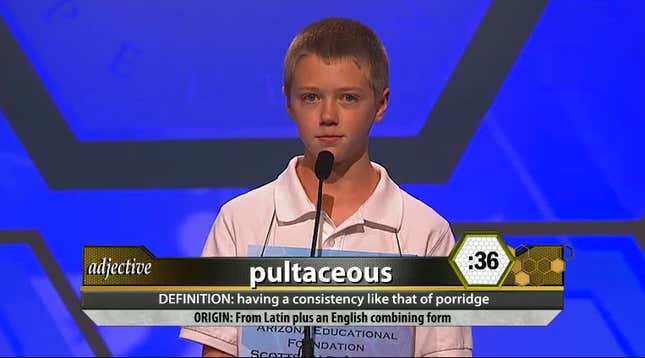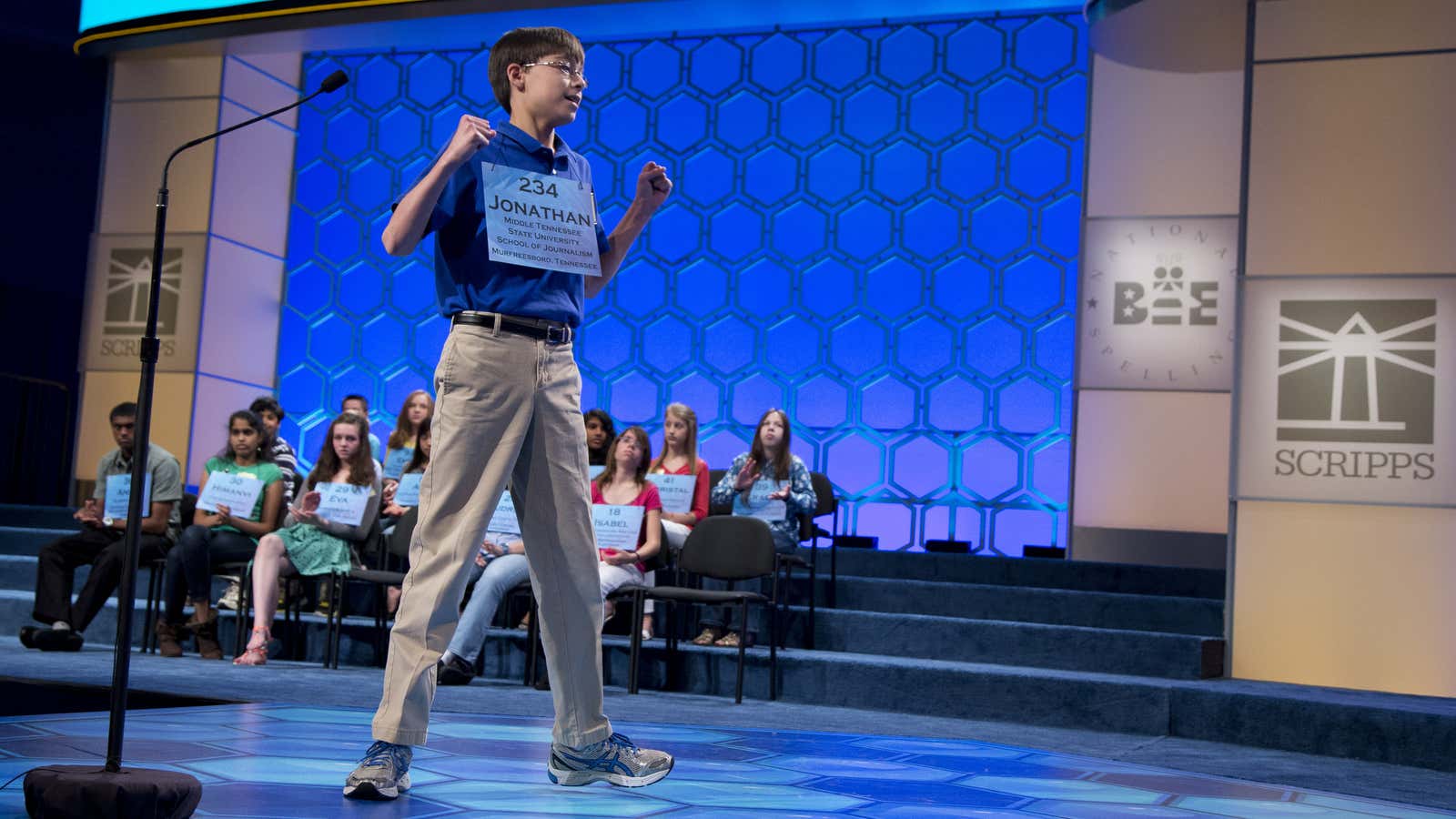More than a million people in the United States tuned into ESPN last year for the final round of the Scripps National Spelling Bee, a new record for the orthographic competition featuring kids between the ages of 8 and 14. This year’s championship, broadcast live tonight at 8 o’clock Eastern Time, may surpass that. The bee, against all odds, has become a full-fledged American phenomenon.
Televising a spelling bee is no easy task, but ESPN is well placed to do it. Long before the network became a cable TV giant, part of the Disney media empire, the ESP Network made a name for itself as a broadcaster of sporting events that no one ever imagined could make for compelling television—a home better suited for backgammon than basketball.
ESPN’s very first night of programming, on Sept. 7, 1979, featured wrestling, college soccer, and softball. A few years later, the network proved that even yacht racing could hold the attention of viewers when it aired the 1983 America’s Cup. The trick, according to an excellent oral history of ESPN, was putting cameras on board some of the boats, turning the sport into a reality show.
That was a transformative moment for cable television, demonstrating that niche programming could garner passionate audiences large enough to sustain a business. The America’s Cup broadcast was profitable in its first year.
The network pulled off a similar trick, on a much larger scale, when it began airing thousands of hours of poker tournaments during the 2000s. ESPN’s key innovation with poker programming was a camera in front of each player that revealed his cards to viewers at home, which somewhat paradoxically created more suspense than having to wait for the cards to turn over.
“With the invention of the hole cam,” explained poker journalist John Vorhaus recently, ”we have the omniscience as an audience that we never had before. Now we’re watching a threat unfold where each player in the hand can be thought of as the protagonist. Suddenly, we can look at poker as an exercise in storytelling.”
ESPN’s broadcast of the 2003 World Series of Poker became a wildly compelling and popular television series, thanks to the hole cameras and the tournament’s underdog victor, an accountant named Chris Moneymaker. Poker quickly became the most frequently shown sport, though it might more accurately be called a game, on ESPN’s many channels.
That recipe of omniscience and personality essentially explains ESPN’s strategy with the spelling bee, as well. Viewers will be given backstories for the 12 young finalists. (I am rooting for Vanya Shivashankar.) And the network will let its viewers be all-knowing, displaying the correctly spelled word on screen while the contestant struggles to form it. Like so:

Viewers who can’t stand the spoilers can opt for an online-only “play along” feed of the competition. But the million or so watching on TV will get the words spelled for them. That ruins the bee’s natural form of suspense, of course, but creates another form of tension. Will that suffix trip him up? Ooh, ouch, he doesn’t even know yet that he got it wrong…
The stakes are high tonight for the 12 finalists, many of whom train endlessly in spelling bee farm leagues. And, with a little artistry, ESPN will let its audience join in the drama in the best way it knows how.




